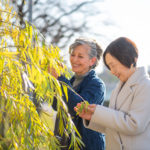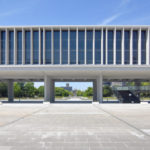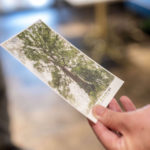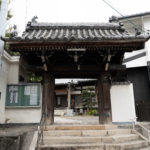Think about peace from atomic bombed buildings and trees (Hijiyama Area)
Hijiyama Park, the first official park in Hiroshima city, has been a popular spot for cherry blossoms. As it was only about two kilometers from the hypocenter, immediately after the atomic bombing, many people gathered to escape the spreading flames and took refuge in the pathways and under the shade of the trees.
Hijiyama Bridge (on Kyobashi River)
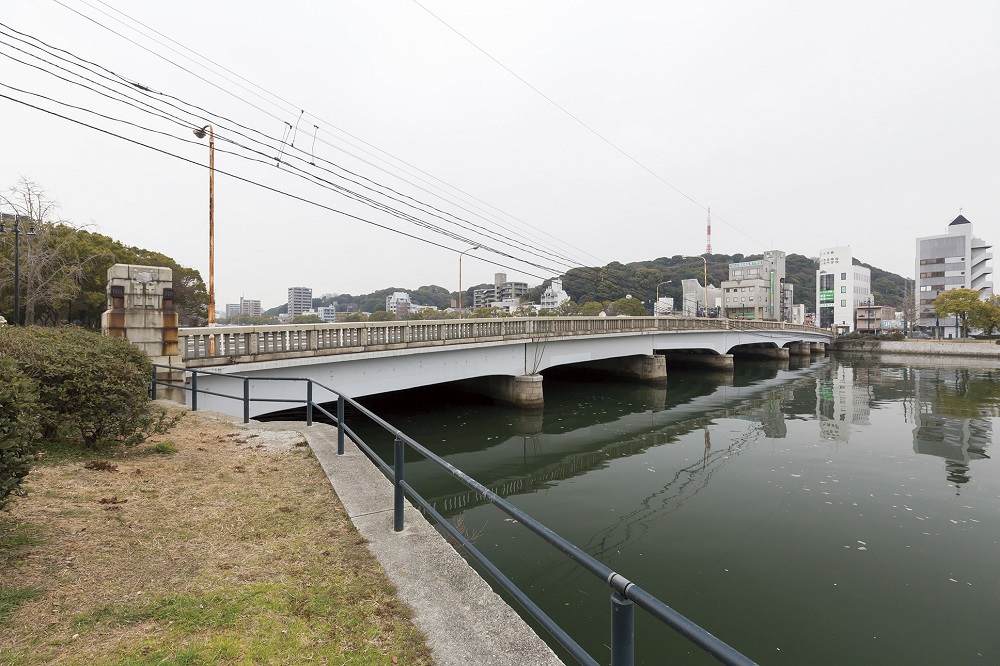
This reinforced concrete bridge over the Kyobashi River was completed in September 1939. It was exposed to the atomic bombing at 1,710 meters from the hypocenter, and the blast blew part of the parapet which fell into the river. While traces of the damage remain in the bridge, being repaired and maintained, it is still in use today.
Location: Hijiyama-hon-machi, Minami Ward, Hiroshima City
Weeping Willow at the east side of Tsurumi-Bashi bridge

The tree was exposed to the bombing at the foot of the Tsurumi-Bashi Bridge, 1,700 meters from the hypocenter. Then it was transplanted to the present location. It lost the upper part of its trunk in the bombing so it has a bowed-down shape. Though that part of the trunk died, another new trunk has grown and expanded its branches.
Location: 20 Hijiyama-hon-machi, Minami Ward, Hiroshima City
Tamonin Temple and the Bell Tower

During the war, Tamonin Temple was designated as an emergency evacuation site for the Hiroshima Prefectural Government. On the evening of the day of the atomic bombing, the prefectural air raidheadquarters were set up here, to manage relief supplies and to distribute food. Also, the bell was lost in the metal offering for war, but in 1949, a new “Peace Bell” was built and installed at the bell tower.
Address: 7-10 Hijiyama-cho, Minami Ward, Hiroshima City
The Sanyo Buntoku-den Memorial Hall

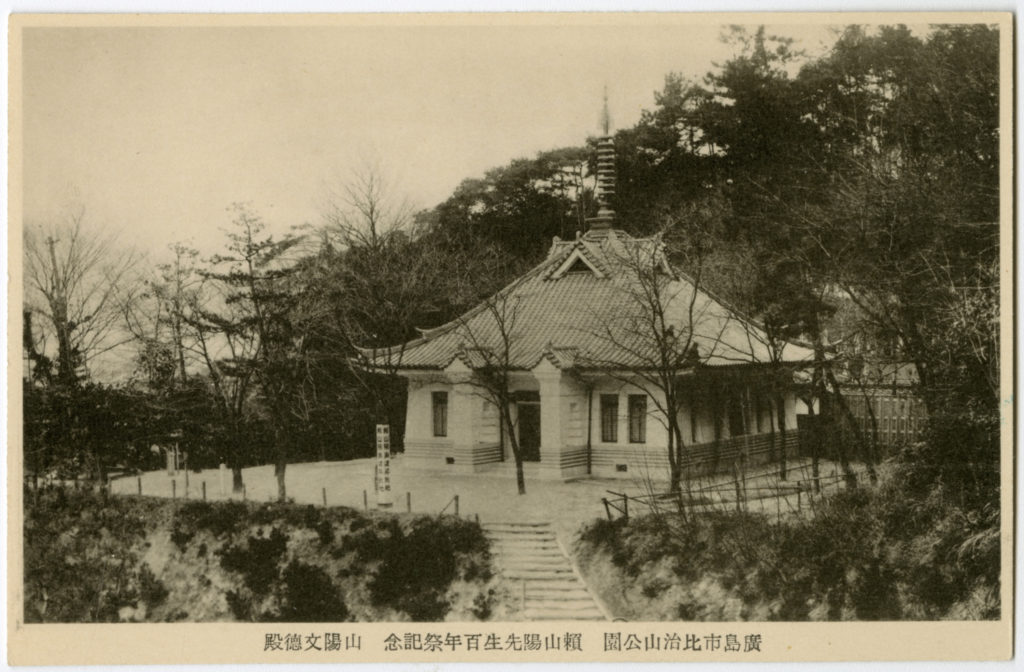
Offered by Hiroshima Municipal Archives
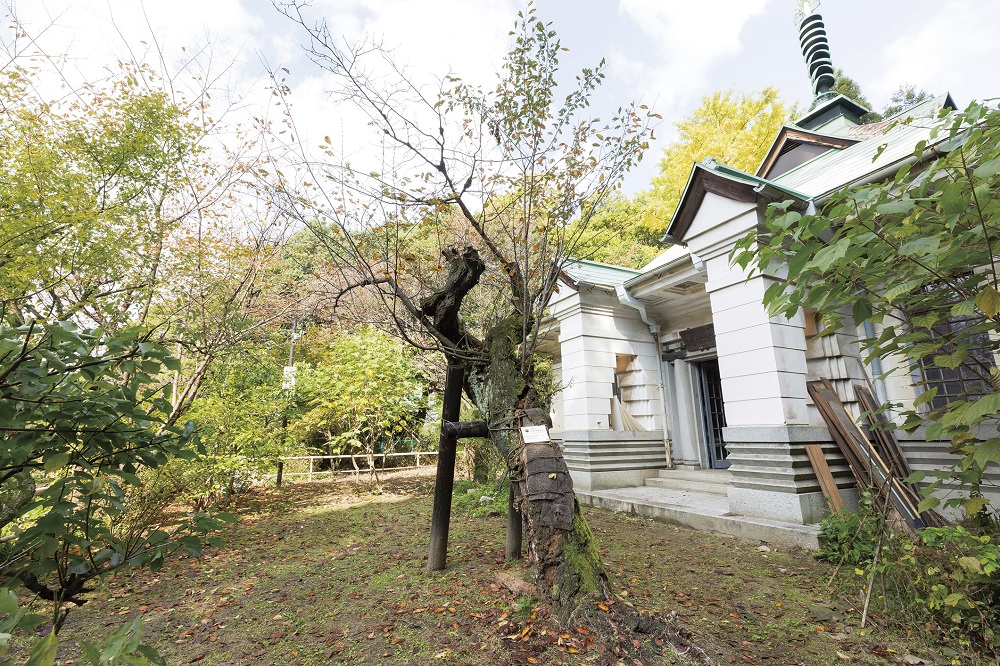
Someiyoshino Cherry Blossom
The hall was built in 1934 to commemorate the 100th year after the death of Rai Sanyo, a Japanese Confucian philosopher, at the end of the Edo period. Due to the worsening war situation, the city government evacuated most of the family register data here. The hall was located 1,820 meters from the hypocenter, and although the family registers were scattered by the blast, they were not burnt. On the roof, there is a deformed nine-ringed wheel that has been preserved till today. In front of the entrance, there is a Someiyoshino(cherry blossom) tree that leans heavily toward the hypocenter.
Address: 7-1 Hijiyama-cho, Minami Ward, Hiroshima City
“Camphor tree” in Hijiyama Park
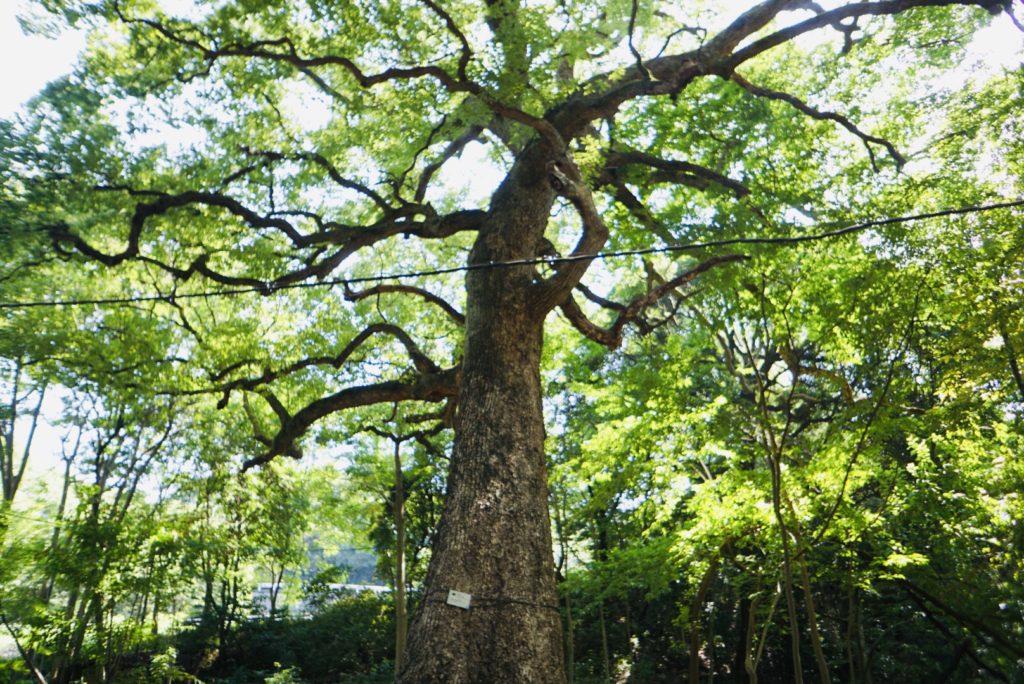
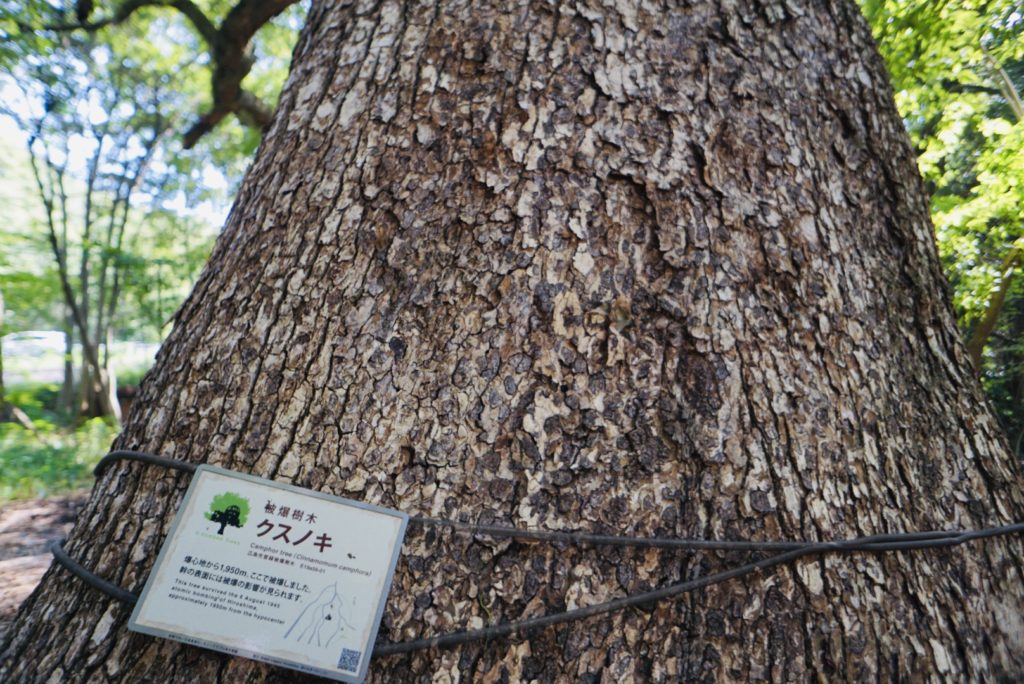
The Camphor tree is located about 2 kilometers from the hypocenter, and the surface of the trunk on the hypocenter side has rough bark.
Location: Hijiyama Park, Minam Ward, Hiroshima City
Route Map
Think about peace from atomic bombed buildings and trees
Peace Study Projects
Cooperation with local companies to convey the importance of life through hibaku-jumoku, trees that survived the atomic bombing
JMS Co., Ltd. supports the Green Greetings Project. The objective of the project is to protect trees that survived the atomic bombing in Hiroshima, to pass them down to generations to come to disseminate information about the existence of these trees.
Cooperation with local companies to convey the importance of life through hibaku-jumoku, trees that survived the atomic bombing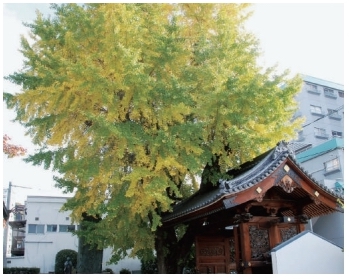
Peace Tourism (Hiroshima City)
This is for those who are interested in peace-related facilities in Hiroshima City. The appearances of the facilities before the dropping of the atomic bomb and some stories about the recovery from the ashes of the war are introduced.
Exploring “A Longing for Peace”
Tags associated with this article



